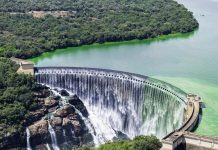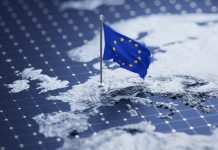Shrinivas Tukdeo, Research Director, and Sharath Thirumalai, Senior Analyst, are part of the Advanced SciTech team at Everest Group. Here, they focus on emerging technologies shaping the global energy, environment, and sustainability landscape
The global climate crisis has hit a critical turning point. According to the International Energy Agency (IEA), atmospheric CO2 has exceeded 422 parts per million, 50% above pre-industrial levels (1) – trapping heat, disrupting weather patterns, and accelerating global warming. Addressing this requires cost-effective, scalable emission reduction pathways (ERPs) that combine nature-based solutions with engineered technologies.
1. The biology of carbon sequestration
Forests stand as nature’s most effective carbon capture system. Through photosynthesis, trees absorb CO2 and store it in biomass such as roots, trunks, branches and soil for decades or even centuries. Globally, forests and green spaces capture approximately 16 billion tonnes of CO2 annually, a critical buffer in the fight against climate change. (2) Yet this role is not static. Catastrophic events such as wildfires, droughts, and land degradation can reverse decades of carbon sequestration, releasing vast amounts of CO2 back into the atmosphere.
This makes conservation, afforestation, reforestation, and even urban green infrastructure central to climate resilience. Beyond carbon, forests sustain biodiversity, regulate floods, improve air quality and enhance community well-being. They also support forest-based industries that create jobs, promote eco-tourism and sustain Indigenous livelihoods.
2. Forests in the global carbon budget
The balance between deforestation and reforestation has direct implications for the global carbon budget. Forest conservation ensures the permanence of existing carbon stocks, while afforestation and reforestation expand capacity for future sequestration. Managed intelligently, forests can shift the global carbon balance from deficit toward equilibrium, generating both environmental and economic value.
Policies are increasingly aligned with this vision. The EU Regulation (EU) 2023/1115 on Deforestation-Free Products (EUDR), effective since June 2023, seeks to curb the EU’s role in global deforestation by requiring commodities like cattle, soy, palm oil, coffee, cocoa, and wood to be sourced from deforestation-free supply chains. The regulation is expected to reduce EU-driven emissions by at least 32 million tonnes annually, while limiting biodiversity loss. (3)
Globally, the REDD+ initiative incentivises developing countries to conserve and sustainably manage forests while monetising the carbon stored within them. Together, these frameworks highlight forests as both ecological assets and climate finance instruments. (4)
3. The expanding role of CCUS
Forests alone cannot stabilise the climate. As emissions continue from hard-to-abate sectors such as cement, steel, and aviation, engineered approaches are critical complements. Carbon Capture and Storage (CCS) captures CO2 directly from industrial and energy facilities, transporting it for permanent storage in geological formations. Its extension, Carbon Capture, Utilisation, and Storage (CCUS), adds an economic dimension by recycling CO2 into synthetic fuels, building materials, and chemicals.
The EU’s Industrial Carbon Management Strategy (2024) reflects this integration, aiming to create a CCS market and infrastructure across member states. Crucially, it allows companies to blend forest-based credits with CCS-derived credits, aligning with the European Green Deal and the EU Biodiversity Strategy 2030. This signals a shift in policy toward a unified portfolio approach, where natural and engineered pathways converge.
Looking ahead, the European Commission anticipates the need to capture around 450 million tonnes of CO2 annually by 2050. (5) Of this, approximately 55% is expected to be stored permanently through forests and large-scale Carbon Capture and Storage. In contrast, the remaining 45% will be utilised to produce carbon-negative products such as synthetic aviation fuels. (6) This dual pathway underscores the role of CCUS in decarbonisation and defossilisation, reducing net atmospheric CO2 while spurring innovation in carbon-based industries.
4. Technology as the enabler
The credibility of both forest-based and engineered solutions depends on precise measurement and transparent reporting. Advances in monitoring, analytics, and verification have revolutionised the management of forests and carbon projects.
Satellites deliver near-daily imagery of land-use change, while synthetic aperture radar penetrates tropical cloud cover to detect deforestation. The ESA Biomass mission will map global above-ground biomass every six months, significantly improving accuracy. At the same time, drones and airborne LiDAR produce 3D models of forest canopies, revealing subtle degradation invisible to conventional methods.
Artificial intelligence amplifies these tools by integrating multi-sensor data to provide high-fidelity carbon estimates and forecast deforestation risk zones. Measurement, Reporting, and Verification (MRV) platforms such as Pachama automate reporting, reducing costs and enhancing market trust. Blockchain adds a layer of transparency by tying carbon credits to geolocated forest parcels, while IoT sensors on the ground track microclimates and soil health in real time.
Transparency and accuracy are not only critical for the credibility of carbon credits but also for the broader corporate and policy landscape. For businesses, high-fidelity monitoring ensures that net-zero claims withstand scrutiny, thereby strengthening investor confidence and access to sustainable finance. Regulators, too, are moving toward stricter MRV requirements under frameworks such as the EUDR and carbon border adjustment mechanisms (CBAMs), meaning that firms cannot rely on approximate or outdated data.
Beyond compliance, transparency reduces reputational risk, provides insurance against accusations of greenwashing, and enables executives to prioritise investments in the most impactful projects. In short, accurate monitoring turns forests and CCUS assets into not just carbon offsets but trusted instruments of strategy, finance, and risk management.
Together, these innovations are transforming forests into auditable climate assets, enhancing the credibility of carbon markets, strengthening corporate climate disclosures, and enabling integration into both compliance and voluntary systems.
5. Strategic implications for executives
For business leaders, the message is clear: forests and CCUS are not competing solutions but complementary pillars of a resilient climate strategy. Forests offer low-cost sequestration with co-benefits for biodiversity and communities. CCUS provides permanence and scalability for industrial decarbonisation. Technology ensures the credibility of both.
Embedding forests and CCUS into the core strategy not only mitigates emissions but also shields organisations from reputational risks, unlocks financing through premium-grade credits, and positions them as active contributors to global climate goals. By blending natural resilience with technological precision, executives can build a climate portfolio that is credible, competitive, and future-proof.
Conclusion: A portfolio approach to climate neutrality
Forests are no longer passive backdrops to human progress; they are strategic, measurable assets in the global carbon economy. Yet their strengths must be paired with the permanence of CCUS and the precision of technology to unlock climate mitigation at scale. Policymakers are signalling this shift, and markets are rapidly adapting.
For businesses, industries, and policymakers, the challenge is not choosing between forests or CCUS, but combining them effectively. The leaders who build portfolios that unite nature, technology, and policy will define the path to net zero.
References
- International Energy Agency (IEA). 2025. “Global Energy Review 2025.”
- Forest Stewardship Council International. 2025. “Capturing and Storing
Carbon Dioxide.” - European Commission. 2025. “Regulation on Deforestation-Free Products.”
- United Nations Climate Change. 2025. “Reducing Emissions from
Deforestation and Forest Degradation in Developing Countries (REDD+
Directive)” - IFP Energies Nouvelles. 2025. “E-Fuels: Challenges and Opportunities, CCU &
CCS: two complementary industries.” - CO2 Value Europe AISBL.2024. Accessed August 5th, 2025. “The Contribution
of Carbon Capture and Utilisation Toward Climate Neutrality in Europe.”











